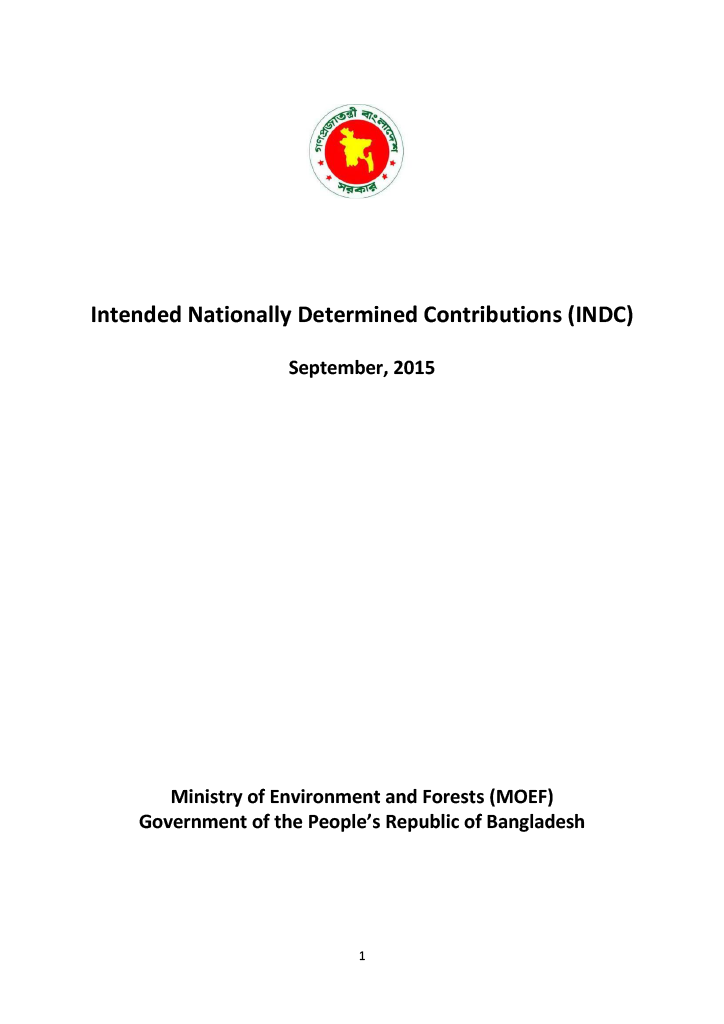Bangladesh’s Intended Nationally Determined Contributions (INDC) sets out a number of mitigation and adaptation actions that will help limit the country’s greenhouse gas (GHG) emissions in key sectors.
The INDC includes both unconditional and conditional emissions reduction goals for the power, transport, and industry sectors, alongside further mitigation actions in other sectors, which Bangladesh intends to carry out.
Bangladesh also intends to implement its conditional emissions reduction goal subject to appropriate international support in the form of finance, investment, technology development and transfer, and capacity building.
The foundation of this INDC is Bangladesh’s existing strategies and plans, in particular, the Bangladesh Climate Change Strategy and Action Plan (BCCSAP), Renewable Energy Policy 2008, the Energy Efficiency and Conservation Master Plan (E&CC Master Plan), the forthcoming National Adaptation Plan, the National Sustainable Development Strategy, the Perspective Plan (Vision 2021) and the Sixth (and forthcoming seventh) Five Year Plan, the National Disaster Management Plan and the Disaster Management Act.
In addition, it incorporates the outcome of further analysis and consultation to enhance our existing plans and to analyze future GHG emissions trends and mitigation and adaptation options.
The Intended Nationally Determined Contributions (INDC) was retrieved from the Ministry of Environment, Forests and Climate Change (MoEFCC) and was submitted on 25 September 2015.
Recent Updates:
On 15 August 2021, the Government of Bangladesh submitted its Updated Nationally Determined Contributions (NDCs).
In 2018, Bangladesh prepared its NDC Implementation Roadmap and Action Plan.
On 9 January 2016, the Daily Star highlighted that Bangladesh proposed in its INDC that it will unconditionally reduce emissions in three major sectors, namely, transport, energy, and industry, by 5 percent by 2030 with reference to business as usual (BAU) scenario; and, if financial and technological support is available from the international community, the reduction can be 15 percent.
Help SAR-Climate keep this document page accurate and updated by suggesting an edit or any corrections here.

